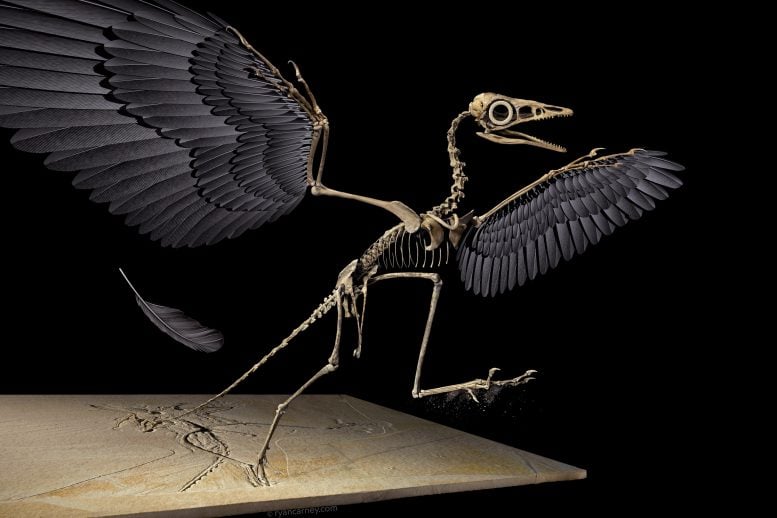
Ultimately, this study provides overwhelming evidence that this Jurassic feather came from the ancient wing of flying dinosaur Archaeopteryx, reconstructed here in 3D. Credit: Ryan Carney
A new study provides substantial evidence that the first fossil feather ever to be discovered does belong to the iconic Archaeopteryx, a bird-like dinosaur named in Germany on this day in 1861. This debunks a recent theory that the fossil feather originated from a different species.
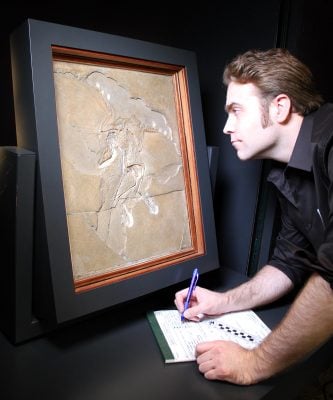
Lead author Ryan Carney examines the iconic Berlin specimen of Archaeopteryx used in this study. Credit: Ryan Carney
The research published in Scientific Reports finds that the Jurassic fossil matches a type of wing feather called a primary covert. Primary coverts overlay the primary feathers and help propel birds through the air. The international team of scientists led by the University of South Florida analyzed nine attributes of the feather, particularly the long quill, along with data from modern birds.
They also examined the 13 known skeletal fossils of Archaeopteryx, three of which contain well-preserved primary coverts. The researchers discovered that the top surface of an Archaeopteryx wing has primary coverts that are identical to the isolated feather in size and shape.
The isolated feather was also from the same fossil site as four skeletons of Archaeopteryx, confirming their findings.
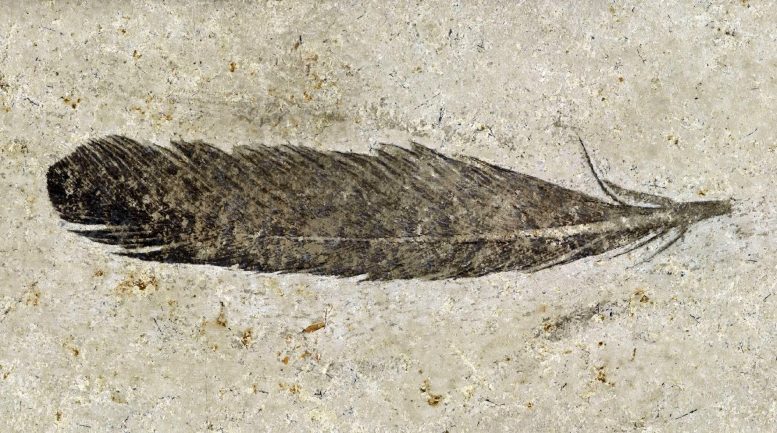
Close-up photograph of the isolated fossil feather studied. Based on nine attributes, the researchers determined that it was a type of wing feather called a primary covert. Credit: Museum fur Naturkunde
“There’s been debate for the past 159 years as to whether or not this feather belongs to the same species as the Archaeopteryx skeletons, as well as where on the body it came from and its original color,” said lead author Ryan Carney, assistant professor of integrative biology at USF. “Through scientific detective work that combined new techniques with old fossils and literature, we were able to finally solve these centuries-old mysteries.”
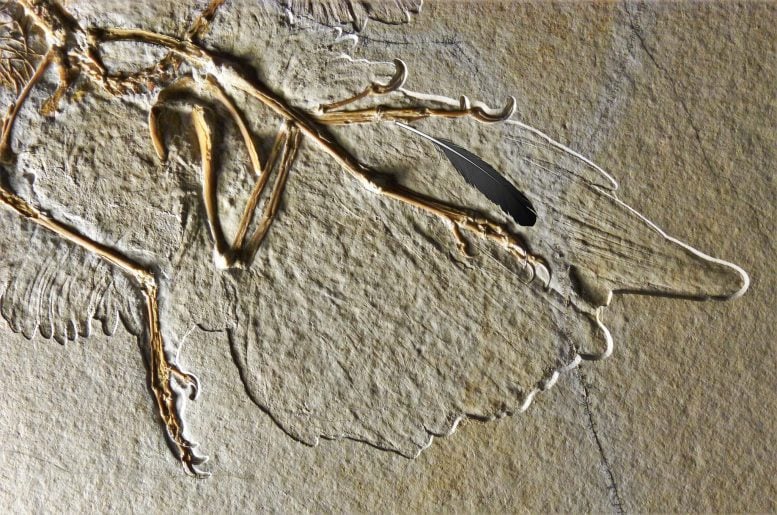
Right wing of the Altmühl specimen of Archaeopteryx. The team discovered that this top surface of the wing has primary coverts that are identical to the isolated feather in size and shape. Credit: Ryan Carney, University of South Florida Helmut Tischlinger
Using a specialized type of electron microscope, the researchers determined that the feather came from the left wing. They also detected melanosomes, which are microscopic pigment structures. After refining their color reconstruction, they found that the feather was entirely matte black, not black and white as another study has claimed.
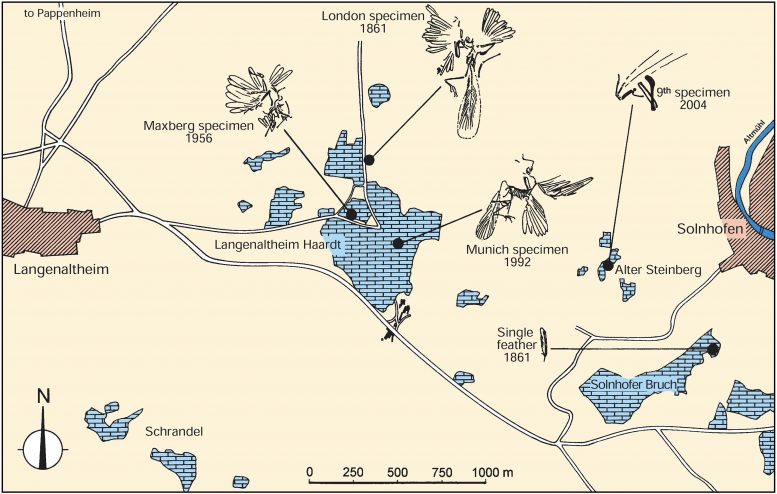
Critically, the isolated feather is from the same fossil site as four skeletons of Archaeopteryx. This evidence corroborates the conclusion that the isolated feather belongs to Archaeopteryx. Credit: Peter Wellnhofer
Carney’s expertise on Archaeopteryx and diseases led to the National Geographic Society naming him an “Emerging Explorer,” an honor that comes with a $10,000 grant for research and exploration. He also teaches a course at USF, called “Digital Dinosaurs.” Students digitize, animate, and 3D-print fossils, providing valuable experience in paleontology and STEAM fields.
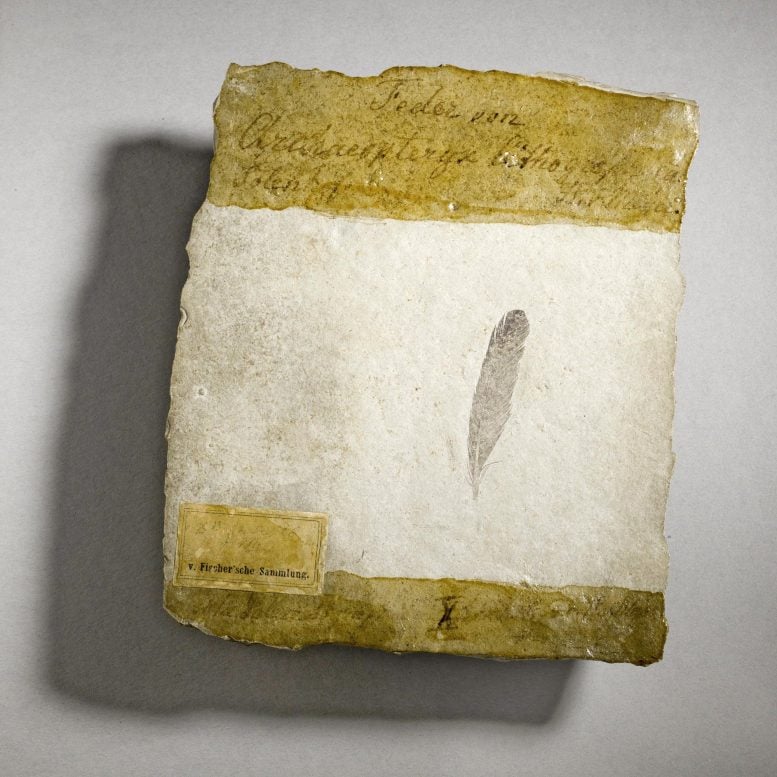
The controversial 150 million-year-old fossil feather, housed at the Museum für Naturkunde in Berlin, Germany. The name “Archaeopteryx lithographica” was coined and assigned to this fossil on September 30, 1861. Credit: Museum fur Naturkunde
Reference: “Evidence corroborates identity of isolated fossil feather as a wing covert of Archaeopteryx” by Ryan M. Carney, Helmut Tischlinger and Matthew D. Shawkey, 30 September 2020, Scientific Reports.
DOI: 10.1038/s41598-020-65336-y

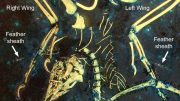
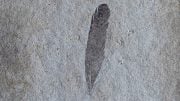
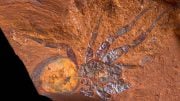

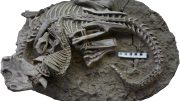
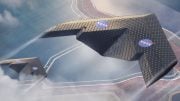

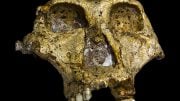
Be the first to comment on "Dinosaur Feather Study Debunked: Overwhelming Evidence Supports Jurassic Fossil Belongs to Archaeopteryx"